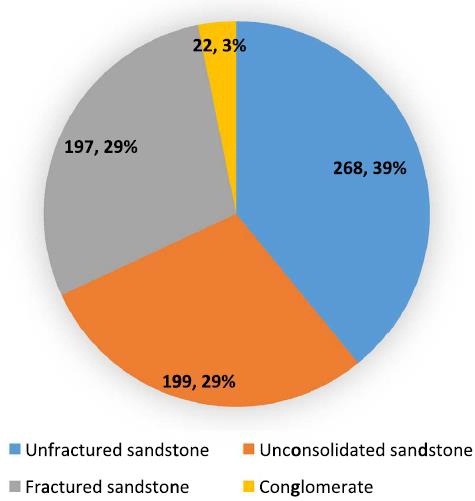Millimeter-size PPGs that are injected into injection wells are usually most advantageously applied to reservoirs with severe fracture-like channels with permeability over a few darcys, which is quite suitable for most oilfields at high water cut stage in China. Millimeter-sized PPG was initiated by PetroChina to control conformance in 1996, and the first successful field application was in Zhongyuan oilfield in 1999. Since then, more than 5000 pilots and field applications have been performed in China. Besides China, a similar product reported by Kinder-Morgan was used to control breakthrough of carbon dioxide with positive results in Scurry County, Texas. Recently, Peirce et al. (2014) published a field case study of using PPGs in the West Sak Field in North Slope of Alaska.
The data set was constructed by collecting data from SPE technical papers, papers published in Chinese, and field applications reports from 2001 to 2015. To establish appropriate application guidelines, this data set excludes unsuccessful applications because these cases are often due to improper operations and the results could be misleading guidance. Successful treatments always result in an injection-pressure increase, an oil-rate increase, or a water-cut decrease. A total of 678 successful PPG treatments applied in injection wells have been found from 11oilfields in China.

PPG treatments were successfully carried out in different formation types (unfractured sandstone, unconsolidated sandstone, fractured sandstone, and conglomerate) as shown in Fig. 2. Among the 678 treatments, approximately 39% were applied in unfractured sandstone, 29% in unconsolidated sandstone, 29% in fractured sandstone and 3% in conglomerate. Although the reported reservoir types for PPGs treatment are mostly sandstone, PPG can also be applied in carbonate reservoirs, as PPGs have already been evaluated in carbonate reservoirs under laboratory conditions with excellent results. Additionally, numerous successful PPG field applications were reported from fractured sandstone reservoirs that have the similar features of carbonate reservoirs.
